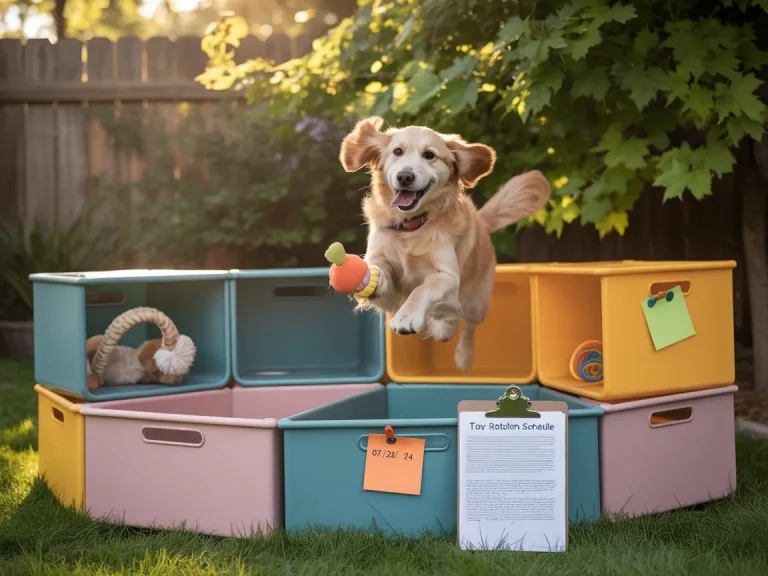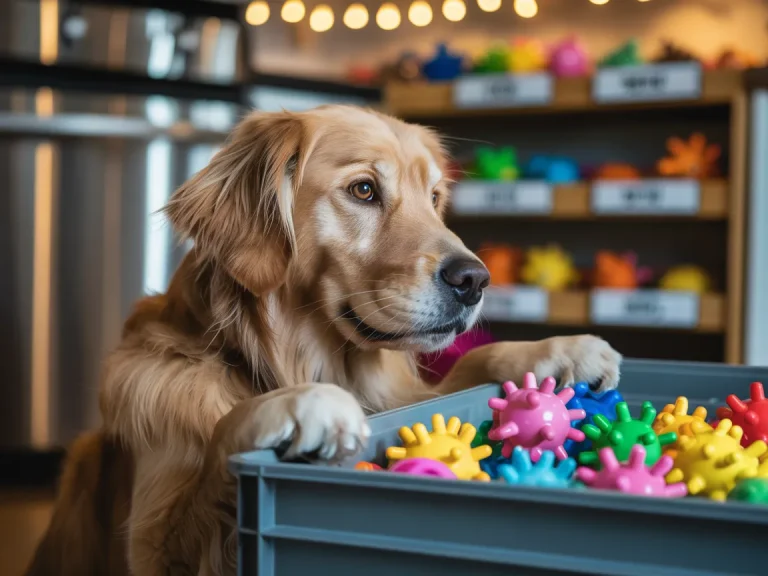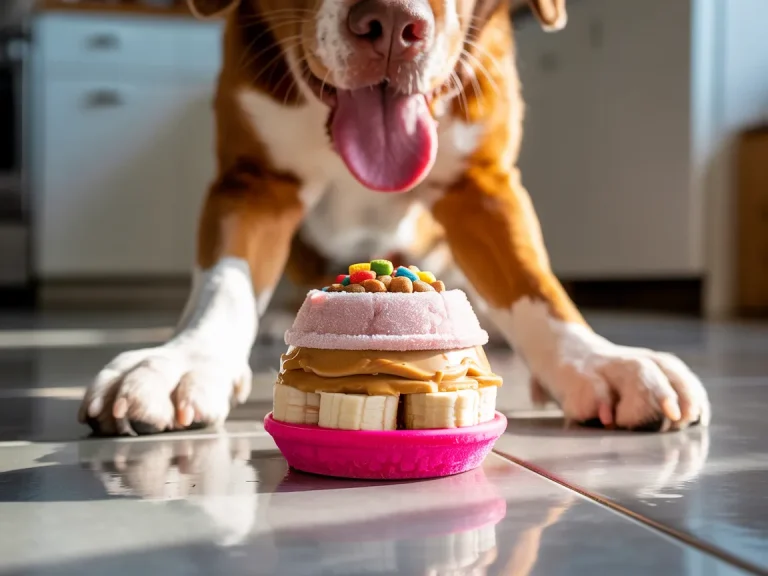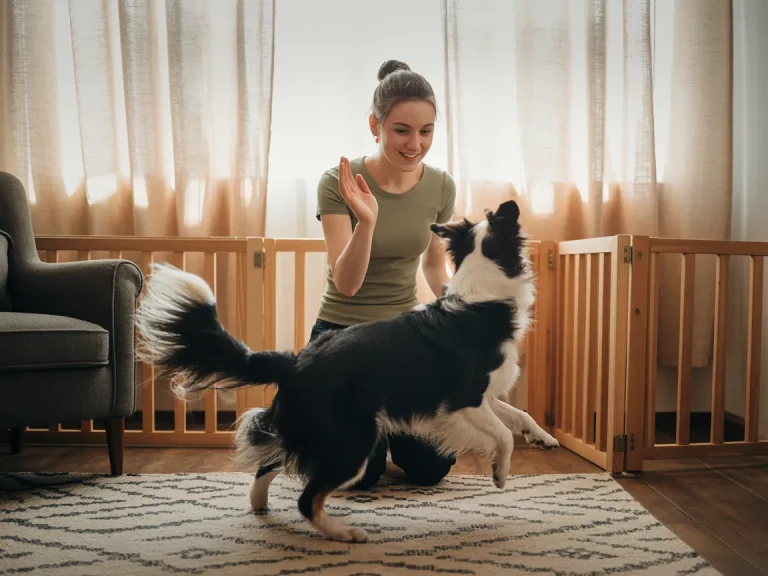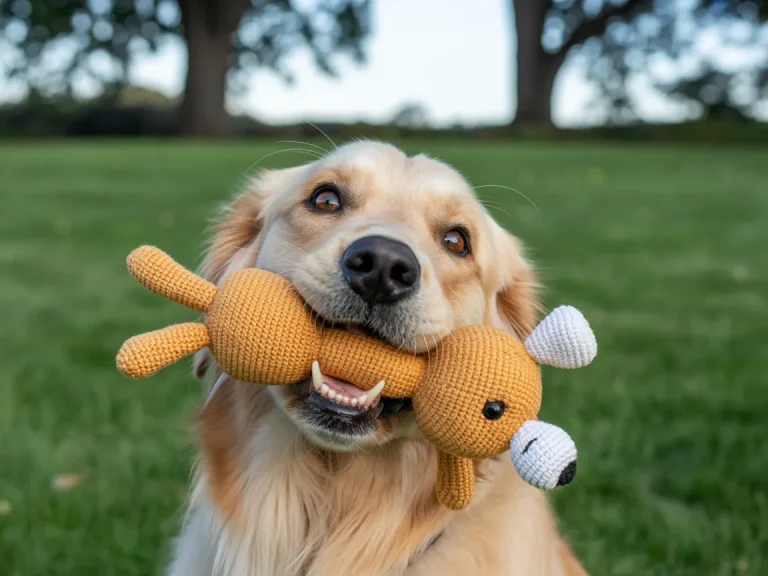Dogs are happiest when their world works both their legs and their brains. Sure, toys and training get the spotlight, but smart design around the house can quietly act like a gym for the mind. If you’re curious about why enrichment matters, the RSPCA offers a clear overview. In this piece, we’ll share six cute, clever ideas that blend style—think playful dog cartoons, charming illustration art, even pixel-art pups—with proven enrichment. These pieces pull double duty: they look great, keep your dog curious and sharp, and keep the peace at home.
1. Interactive Breed-Themed Wall Panels
Picture a framed “portrait” that’s actually a puzzle—golden retriever with a ball, dachshund with a burrow, shepherd on duty—and beneath the artwork are sliding pieces your dog can nudge or paw to reveal treats or scent clues. It’s gallery wall meets brain game, and most dogs catch on fast.
Because panels are modular, you can swap the challenge each week. Start with simple “push to open,” then layer in a second step—press here, spin there—to build working memory. One of my clients’ goldens, Miso, went from timid taps to a smooth two-move combo like she’d been practicing sleight of paw.
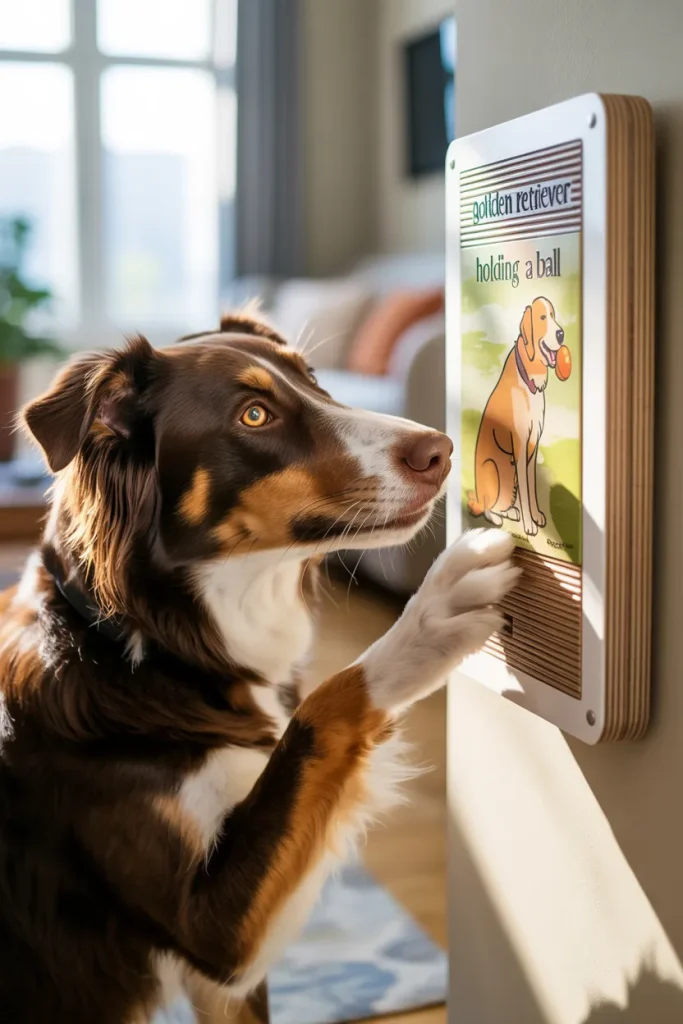
2. Puzzle Feeders Styled as Cartoon Scenes
Puzzle feeders are classics for a reason, but wrapping them in cheerful, cartoon-park scenery makes the whole routine feel like playtime, not a chore. Think hydrants, trees, and friendly silhouettes hiding little flaps and doors—your dog sniffs, paws, and wins lunch one clue at a time. Slower eating, happier brain, cleaner floors. Win-win-win. Recent veterinary research on enrichment feeding suggests these kinds of mealtime puzzles can help reduce stress-related behaviors, too.
Tweak the difficulty as your dog levels up: start with obvious openings, then add covers or removable “bushes.” In multi-dog homes, personalize each feeder with a subtle breed motif so everyone knows whose is whose. Ever seen two roommates argue over Tupperware? Same idea—clear labels, calmer mealtimes.
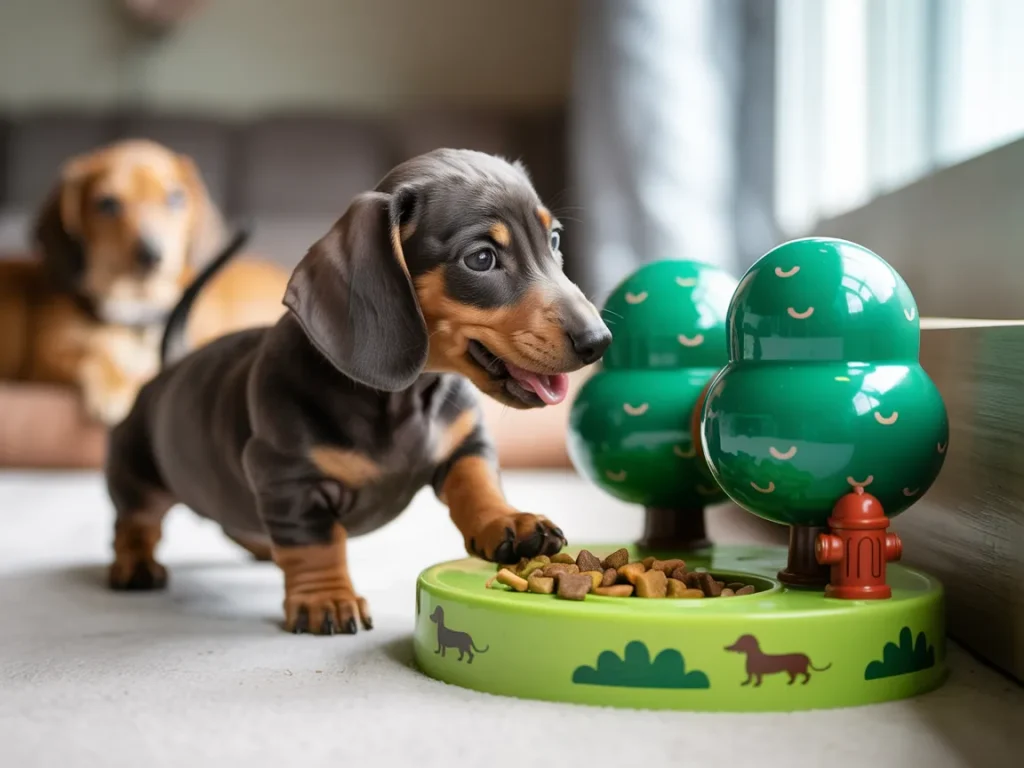
3. Pixel Art Dog Memory Mats
Now for a retro twist: a mat printed with a simple grid of pixel-pup icons. Hide scented cotton pads or tiny toys under specific squares, cue your dog to find A-B-C, then mix it up next round. The bold blocks help dogs target the right spots, while the scents anchor learning—like turning your living room into a friendly memory arcade.
Ready to turn the dial? Add a decoy or extend the sequence. Pair correct finds with a clicker to strengthen the “yes, that!” moment. I’ve seen a tiny dachshund, Pesto, strut across his mat like a chess grandmaster—nose down, tail up, one smart move at a time.
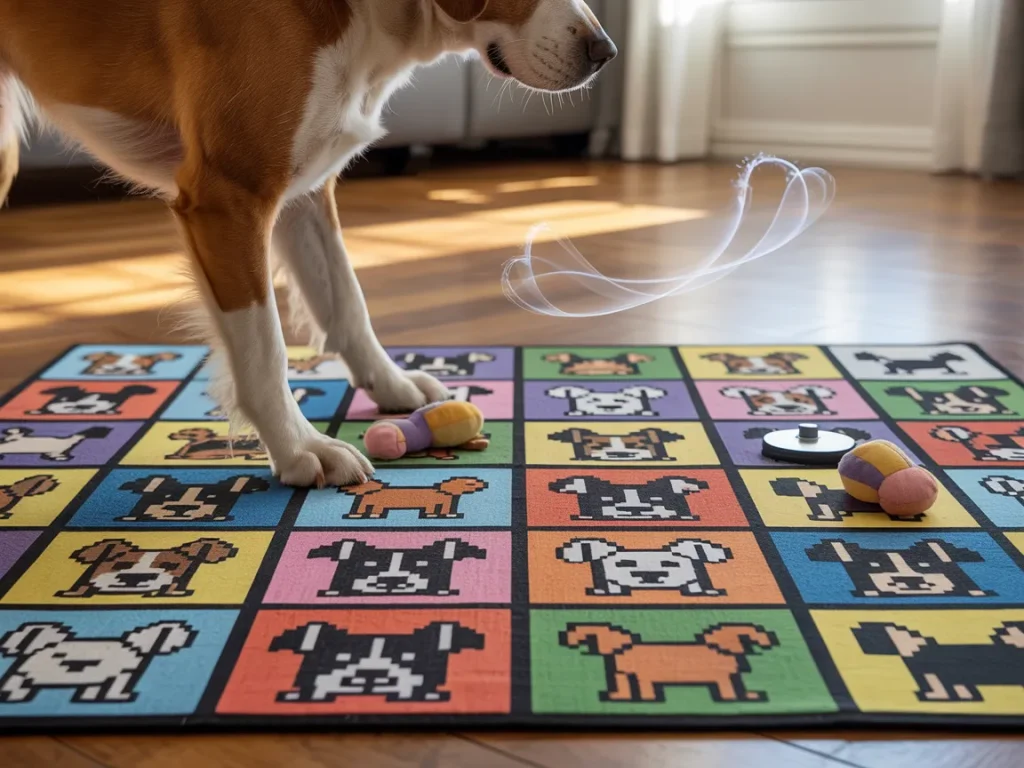
4. Scent Trail Murals with Embedded Clues
Dogs read the world with their noses, so why not turn a wall into a story they can smell? A scent trail mural—think soft german shepherd art or a neutral dog illustration art scene of woods, city blocks, or a beach—hides tiny scent pads or micro-reservoirs that release aromas when your dog sniffs or taps near them. Following one scent to the next becomes a choose-your-own-adventure: nose down, tail up, and off they go. For simple at-home ideas, AKC’s guide to indoor scent games is a great starting point.
Branch the path to build decision-making. One fork leads to the next clue, the other… not so much. You can add timed “pause points,” layer different scents, and change the route weekly so it never gets stale. On the wall it’s tasteful art; to your dog, it’s a living map that rewards focus and patience. I’ve seen a timid beagle, Nori, go from casual sniffing to confident tracking—like a little detective in a canvas trench coat.
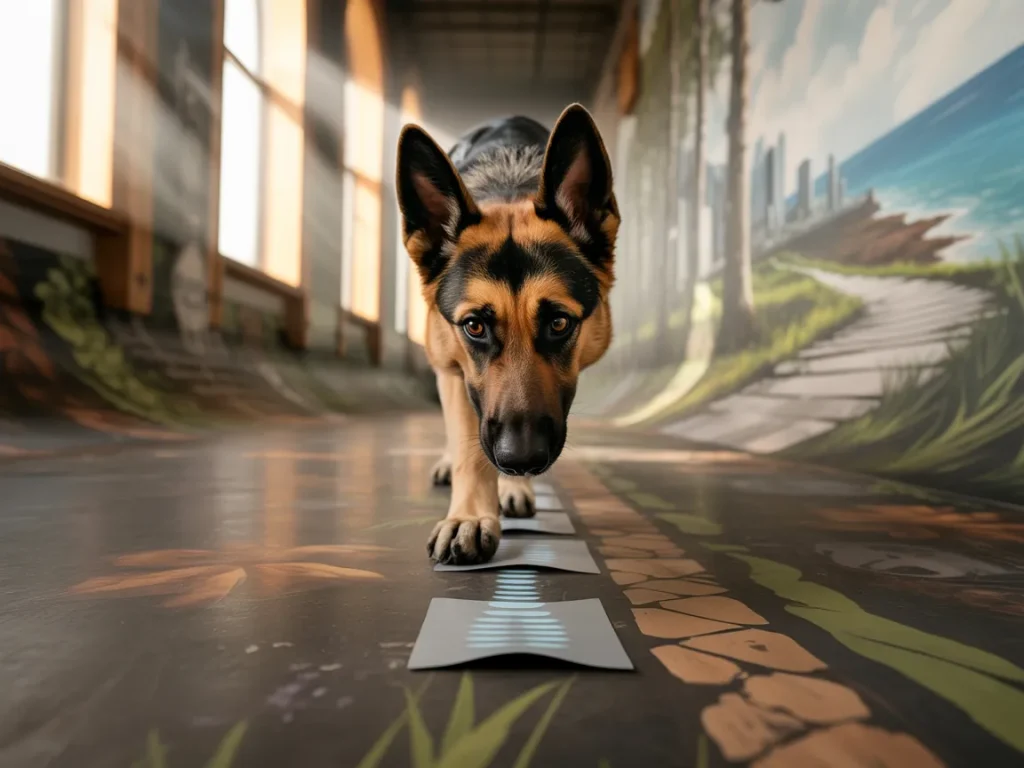
5. Breed-Inspired Hide-and-Seek Boxes
Hide-and-seek boxes are spatial reasoning with a wag. Style them like mini dog houses decorated with golden retriever art or dachshund art, and add several flaps or doors—only some pay out. Dogs quickly learn to test, listen, and look for tiny clues. You can even tuck subtle hints into the illustration (a wagging tail near the “right” door) to help beginners feel clever.
Nest them for multi-step puzzles: solve the small box to unlock the big one. Rotate which door hides the prize so your smarty-pants doesn’t memorize a single pattern. It builds patience and sharpens attention without turning your living room into a full obstacle course. My neighbor’s border collie, Koda, now opens his box with the same confidence I open the fridge—purposeful, fast, and a little too proud of himself.

6. Customizable Illustration Art Activity Boards
Custom activity boards are the “Swiss Army knife” of enrichment. Picture a playful dog illustration art scene—maybe a german shepherd and a golden retriever playing tag—peppered with sliding bones, rotating breed icons, and simple light-up targets. Each element hides a tiny challenge: press the right paw print to chime, spin the circle to align the eyes, slide the panel to reveal a reward pocket. Dogs learn cause-and-effect and practice waiting for the payoff.
Start with single-step wins, then string actions into short sequences that ask for memory and pattern recognition. Swap pieces to track progress and keep it fresh. Recognizable breed features—yes, that long dachshund silhouette—make it charming for humans while staying meaningful for your dog. One shy rescue I worked with, Bean, found his courage by “booping” the light target for his treat; the board became his stage, and every correct press was a standing ovation.
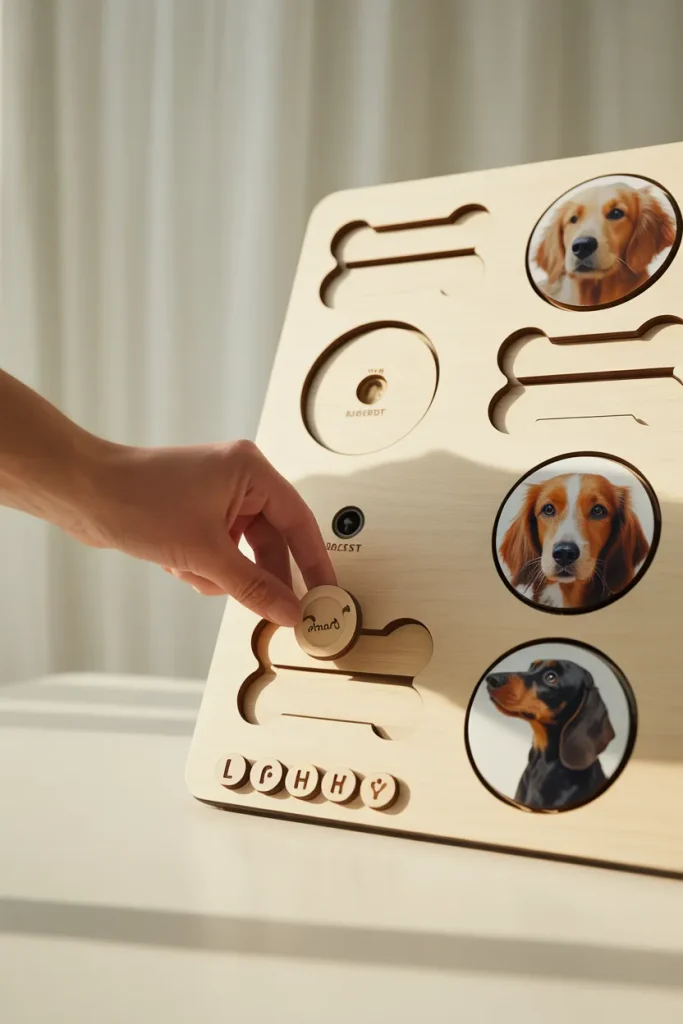
Tips for Getting Started
Pick one design that fits your space and your dog’s current skill level—no need to build Disneyland on day one. Introduce it in short, fun sessions and watch how your dog approaches the challenge. Do they charge in like a tiny detective, or hover and think it through? Mark the wins clearly with a click, a “yes!”, or a small treat so they know, “That’s it.” As they get it, fade your prompts and let them own the puzzle.
Rotate activities every few days to keep that “new toy” sparkle. In multi-dog homes, give each pup solo time so the game stays calm and fair. It’s enrichment, not a race—and a little structure goes a long way.
Safety and Maintenance
Do a quick gear check before play: any loose parts, splinters, or chewable bits? Think of it like checking your smoke alarm—boring but important. Use dog-safe, non-toxic materials and paints, especially near scent pads and treat pockets. Wash fabric mats and clean scent reservoirs regularly; removable covers make life easier and your living room less… “mystery smell.”
If your dog gets frustrated, dial it back. Simplify the steps, rebuild confidence, then nudge the difficulty up again. Keep reinforcement positive and the vibe light. The goal is a wagging tail and a working brain, not a mid-puzzle meltdown.
Conclusion
You don’t have to choose between cute decor and a sharp canine mind. From interactive wall panels to scent-trail murals and pixel-art memory mats, these six ideas dress your home like a well-tailored suit while giving your dog real mental workouts. Personal touches—golden retriever, dachshund, or shepherd themes—make it feel custom without turning your place into a training hall. Start small, rotate often, watch your dog light up, and celebrate every little win.
Disclaimer: This article is for informational purposes only and does not constitute professional veterinary advice. Always consult a licensed veterinarian or certified dog trainer regarding the specific needs and health of your dog.
